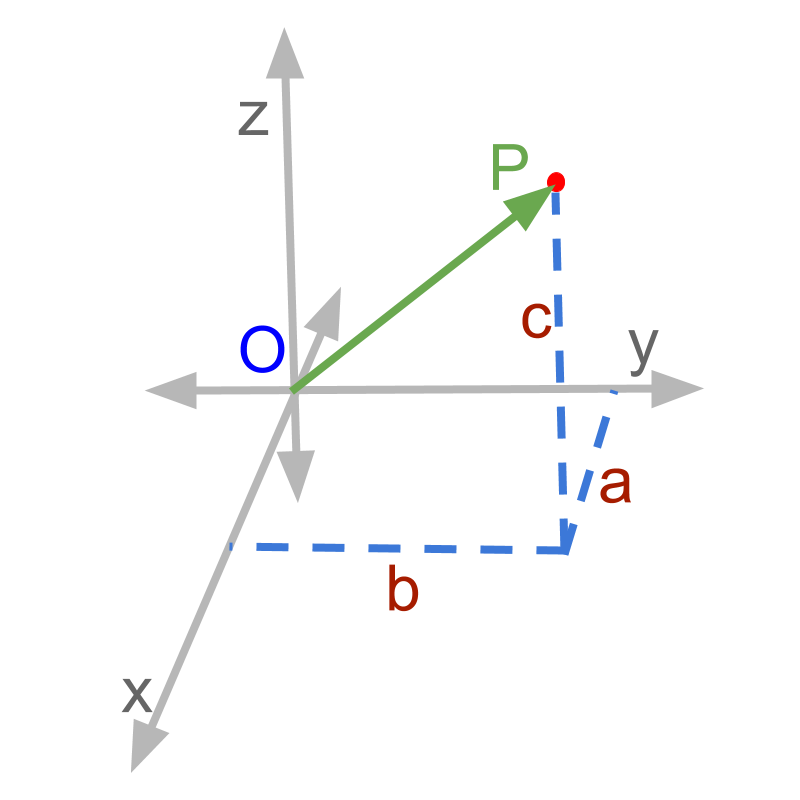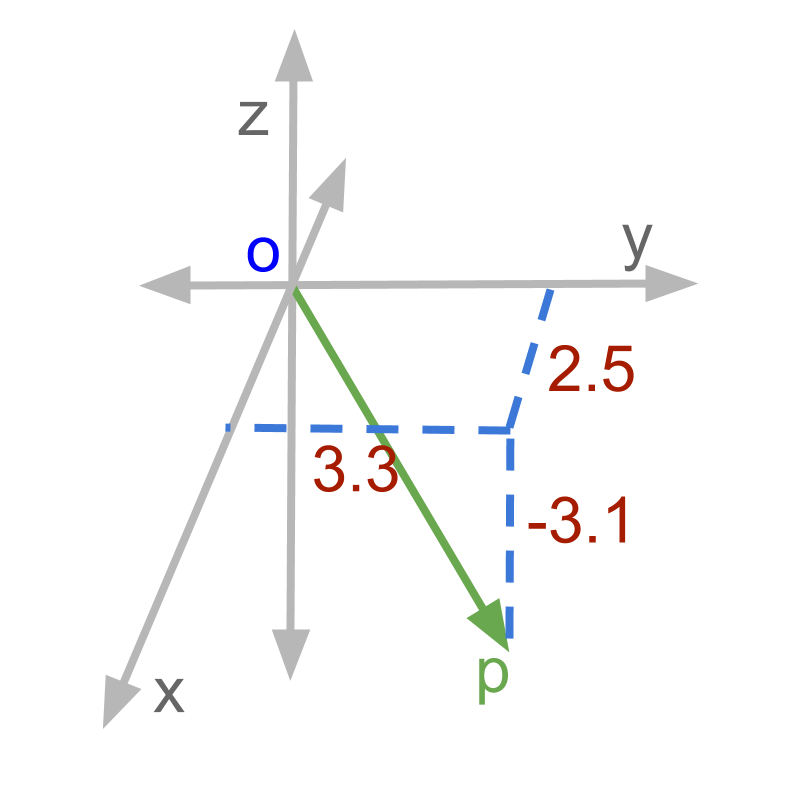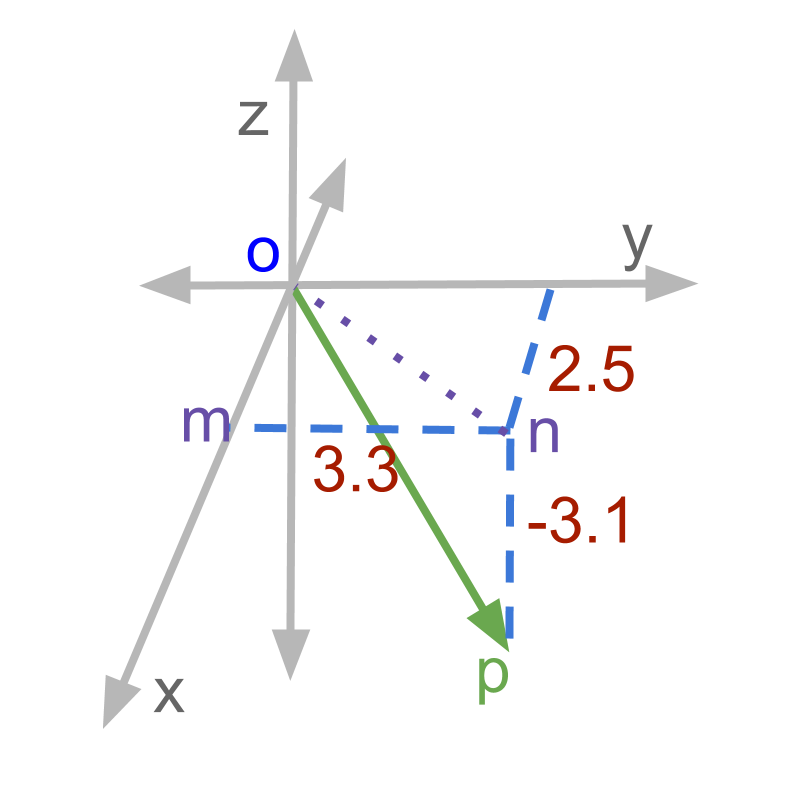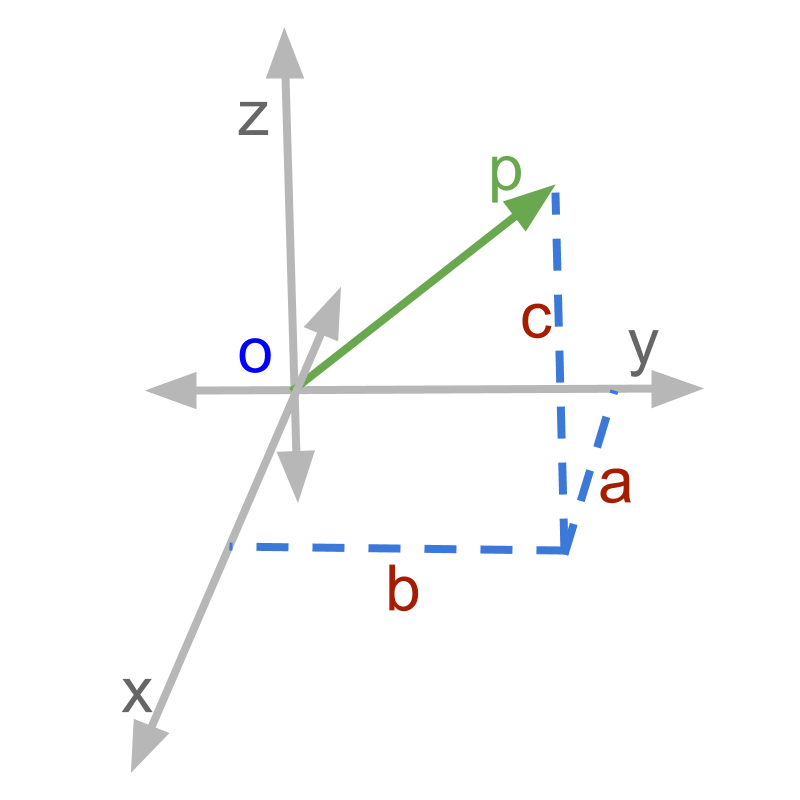
what you'll learn...
Overview
Magnitude of a Vector
» magnitude of is
 → length of is the magnitude
→ length of is the magnitude
length of vector

The length of the in the figure is '', which is computed using the formula to find hypotenuse of right angled triangles (Pythagoras theorem).

The length of the in the figure is '.

The steps to find length of the vector are
• length of is calculated using and as sides of a right angled triangle
• length of is calculated using and as sides of a right angled triangle
This uses Pythagoras Theorem in two steps.

A vector is defined as a quantity with magnitude and direction. If the direction information in removed, the magnitude of a vector is obtained. In this example, length of is the magnitude of the vector. The magnitude of a vector is given by
magnitude
Magnitude of a vector is the 'amount' of the quantity without the direction information.
Magnitude of a Vector: For a vector the magnitude is
The word 'magnitude' means size of something.
A point P is given by the vector . What is the distance of the point from the origin? The answer is
summary
Magnitude of a Vector: For a vector the magnitude is
Magnitude is the 'amount' of the quantity without the direction information.
Outline
The outline of material to learn vector-algebra is as follows.
Note: Click here for detailed outline of vector-algebra.
• Introduction to Vectors
→ Introducing Vectors
→ Representation of Vectors
• Basic Properties of Vectors
→ Magnitude of Vectors
→ Types of Vectors
→ Properties of Magnitude
• Vectors & Coordinate Geometry
→ Vectors & Coordinate Geometry
→ Position Vector of a point
→ Directional Cosine
• Role of Direction in Vector Arithmetics
→ Vector Arithmetics
→ Understanding Direction of Vectors
• Vector Addition
→ Vector Additin : First Principles
→ Vector Addition : Component Form
→ Triangular Law
→ Parallelogram Law
• Multiplication of Vector by Scalar
→ Scalar Multiplication
→ Standard Unit Vectors
→ Vector as Sum of Vectors
→ Vector Component Form
• Vector Dot Product
→ Introduction to Vector Multiplication
→ Cause-Effect-Relation
→ Dot Product : First Principles
→ Dot Product : Projection Form
→ Dot Product : Component Form
→ Dot Product With Direction
• Vector Cross Product
→ Vector Multiplication : Cross Product
→ Cross Product : First Principles
→ Cross Product : Area of Parallelogram
→ Cross Product : Component Form
→ Cross Product : Direction Removed